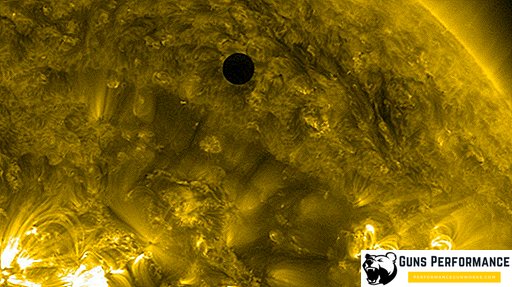The first place in the list of planets of our solar system is occupied by Mercury. Despite the fairly modest size, this planet had an honorable role: to be closest to our star, to be an approximate cosmic body of our star. However, this location can not be called very successful. Mercury is the closest planet to the Sun and is forced to endure all the power of hot love and the warmth of our star.

Astrophysical characteristics and features of the planet
Mercury is the smallest planet of the solar system, belonging together with Venus, Earth and Mars to the terrestrial planets. The average radius of the planet is only 2439 km, and the diameter of this planet near the equator is 4879 km. It should be noted that size makes the planet not only the smallest among other planets in the solar system. It is even smaller than some of the largest satellites.

The satellite of Jupiter, Ganymede, and the satellite of Saturn, Titan, have a diameter of more than 5 thousand km. The satellite of Jupiter Callisto has almost the same size as Mercury.
The planet is named after the sly and impetuous Mercury, the Roman god who patronizes commerce. The choice of name is not accidental. A small and nimble planet is the fastest moving across the sky. The motion and length of the orbital path around our star takes 88 Earth days. This speed is due to the proximity of the planet to our star. The planet is at a distance from 46–70 million km from the Sun.

The following astrophysical characteristics of the planet should be added to the small size of the planet:
- the mass of the planet is 3 x 1023 kg or 5.5% of the mass of our planet;
- the density of a small planet is slightly lower than that of the Earth and equals 5.427 g / cm3;
- the gravitational force on it or the acceleration of free fall is 3.7 m / s2;
- The surface area of the planet is 75 million square meters. kilometers, i.e. only 10% of the surface area;
- the volume of Mercury is 6.1 x 1010 km3 or 5.4% of the volume of the Earth, i.e. 18 such planets would fit in our Earth.
The rotation of Mercury around its own axis occurs with a frequency of 56 Earth days, while the Mercury day lasts half the Earth year on the surface of the planet. In other words, during the Mercury day, Mercury basks in the rays of the Sun for 176 Earth days. In this situation, one side of the planet heats up to extreme temperatures, while the reverse side of Mercury at this time cools to a state of cosmic cold.

There are very interesting facts about the state of the orbit of Mercury and the position of the planet in relation to other celestial bodies. There is practically no change of seasons on the planet. In other words, there is a sharp transition from a hot and hot summer to a fierce cosmic winter. This is due to the fact that the planet has an axis of rotation located perpendicular to the orbital plane. As a result of this position of the planet on its surface there are areas that the sun's rays never touch. The obtained data from the Mariner space probes confirmed that usable water was found on Mercury, as well as on the Moon, which truth is in a frozen state and is located deep beneath the surface of the planet. At the moment, it is believed that such sites can be found in areas close to the regions of the poles.

Another interesting property that characterizes the orbital position of the planet is the discrepancy between the speed of rotation of Mercury around its own axis with the movement of the planet around the Sun. The planet has a constant frequency of circulation, while around the Sun runs around at different speeds. Near perihelion, Mercury moves faster than the angular velocity of rotation of the planet itself. Such a discrepancy causes an interesting astronomical phenomenon - the Sun begins to move along the Mercury sky in the opposite direction, from the West to the east.
Considering the fact that Venus is considered to be the closest planet to Earth, Mercury is often located much closer to our planet than the "morning star". The planet has no satellites, so it accompanies our star in proud solitude.
The atmosphere of Mercury: the origin and current state
Despite the close position to the Sun, the planet's surface is separated from the star on average 5-7 tens of millions of kilometers, but on it the most significant daily temperature drops are observed. During the day, the surface of the planet is heated to a state of a hot frying pan, the temperature of which is 427 degrees Celsius. The cosmic cold prevails here at night. The surface of the planet has a low temperature, its maximum reaches minus 200 degrees Celsius.

The reason for such extreme temperature extremes lies in the state of the Mercurian atmosphere. It is in a very rarefied state, without exerting any influence on the thermodynamic processes on the surface of the planet. Atmospheric pressure here is very small and is only 10-14 bar. The atmosphere has a very weak influence on the climate of the planet, which is determined by the orbital position relative to the Sun.
Basically, the atmosphere of the planet consists of molecules of helium, sodium, hydrogen and oxygen. These gases were either captured by the magnetic field of the planet from particles of the solar wind, or they arose as a result of the evaporation of a Mercury surface. The fact that its surface is clearly visible not only from the board of automatic orbital stations, but also in the modern telescope, testifies to the sparseness of the atmosphere of Mercury. Over the planet there is no cloudiness, opening sunshine free access to the Mercury surface. Scientists believe that this state of the Merkurian atmosphere is explained by the close position of the planet to our star, its astrophysical parameters.

For a long time, astronomers had no idea what color Mercury was. However, watching the planet through a telescope and looking at images taken from spacecraft, scientists found a gray and unattractive Mercurian disk. This is due to the lack of atmosphere of the planet and the rocky landscape.
The strength of the magnetic field is clearly not in a position to resist the effects of the force of the sun, which is exerted on the planet. The solar wind streams supply the atmosphere of the planet with helium and hydrogen, however, due to constant heating, there is a dissipation of the heating gases back into space.

Brief description of the structure and composition of the planet
In this state of the atmosphere, Mercury is unable to defend itself against the attack of cosmic bodies falling onto the surface of the planet. There are no traces of natural erosion on the planet, space processes are more likely to affect the surface.
Like other terrestrial planets, Mercury has its own crust, but unlike Earth and Mars, which mainly consist of silicates, it is 70% metal. This explains the relatively high density of the planet and its mass. In many physical parameters, Mercury is very much like our satellite. As on the moon, the surface of the planet is a lifeless desert, devoid of a dense atmosphere and open to cosmic influence. In this case, the crust and mantle of the planet have a thin layer, if we make a comparison with terrestrial geological parameters. The inner part of the planet is mainly represented by a heavy iron core. It has a core, which consists entirely of molten iron and occupies almost half of the entire planetary volume and ¾ of the diameter of the planet. Only an insignificant thickness of the mantle, just 600 km., Represented by silicates, separates the core of the planet from the crust. The layers of the Mercury crust have a different thickness, which varies in the range of 100-300 km.

This explains the very high density of the planet, which is uncharacteristic for celestial bodies of similar size and origin. The presence of a molten iron core gives Mercury a magnetic field, its strength is enough to counteract the solar wind by capturing charged plasma particles. This structure of the planet is uncharacteristic for most of the planets of the solar system, where the core accounts for 25-35% of the total planetary mass. Probably, this mercurology is caused by the peculiarities of the origin of the planet.
Scientists believe that the composition of the planet was strongly influenced by the origin of Mercury. According to one version, it is a former satellite of Venus, which subsequently lost its rotational moment and was forced, under the influence of the attraction of the Sun, to move to its own elongated orbit. According to other versions, at the stage of formation, more than 4.5 billion years ago, Mercury collided with either Venus or another planetesimal, as a result of which most of the Mercury bark was torn down and scattered in outer space.

The third version of the origin of Mercury is based on the assumption that the planet was formed from the remnants of cosmic matter remaining after the formation of Venus, the Earth and Mars. Heavy elements, mainly metals, formed the core of the planet. For the formation of the outer shell of the planet lighter elements were clearly not enough.
Judging by the photos taken from space, the time of Mercury activity is long past. The surface of the planet is a scanty landscape in which the main decoration is craters, large and small, represented in large numbers. Mercury valleys are vast areas of frozen lava, which testifies to the past volcanic activity of the planet. The crust has no tectonic plates and covers the mantle of the planet in layers.

The size of the craters on Mercury is amazing. The largest and largest crater, which was called the Plain of Heat, has a diameter in diameter of more than one and a half thousand kilometers. The giant caldera of the crater, whose height is 2 km, says that the collision of Mercury with a cosmic body of such dimensions had the scale of a universal cataclysm.
The early termination of volcanic activity led to a rapid cooling of the planet’s surface and the formation of a wavy landscape. The cooled layers of the crust crawled onto the lower ones, forming scales, and the strikes of asteroids and the fall of large meteorites only disfigured the face of the planet.
Spacecraft and equipment engaged in the study of Mercury
For a long time, we observed space bodies, asteroids, comets, satellites of the planet and stars through telescopes, without having the technical ability to study our space neighborhood in more detail and detail. We looked at our neighbors and Mercury quite differently, including when it became possible to launch space probes and vehicles to distant planets. We got a completely different idea of how outer space looks, objects of our solar system.
The bulk of scientific information about Mercury was obtained from astrophysical observations. The study of the planet was carried out with the help of new powerful telescopes. Significant progress in the study of the smallest planet in the solar system gave the flight of the American spacecraft "Mariner 10". Such an opportunity appeared in November 1973, when the Atlas rocket with an astrophysical automatic probe was launched from Cape Canaveral.
The American space program "Mariner" was supposed to launch a series of automatic probes to the nearest planets, Venus and Mars. If the first vehicles were mainly directed to Venus and Mars, then the last, tenth probe, having studied Venus on the way, flew away towards Mercury. It was the flight of a small spacecraft that gave astrophysicists the necessary information about the surface of the planet, about the composition of the atmosphere and about the parameters of its orbit.

The spacecraft carried out surveys of the planet from the flight path. The flight of the spacecraft was designed in such a way that the Mariner-10 was able to pass as far as possible in the immediate vicinity of the planet. The first span took place in March 1974. The device passed from the planet at a distance of 700 km, making the first pictures of a distant planet from close range. During the second span, the distance decreased even more. The American probe swept over the surface of Mercury at an altitude of 48 km. The third time, "Mariner 10" separated from Mercury, a distance of 327 km. As a result of flights "Mariner" managed to get pictures of the surface of the planet and make an approximate map of it. The planet turned out to be dead, inhospitable and unsuitable for existing and known forms of life.












